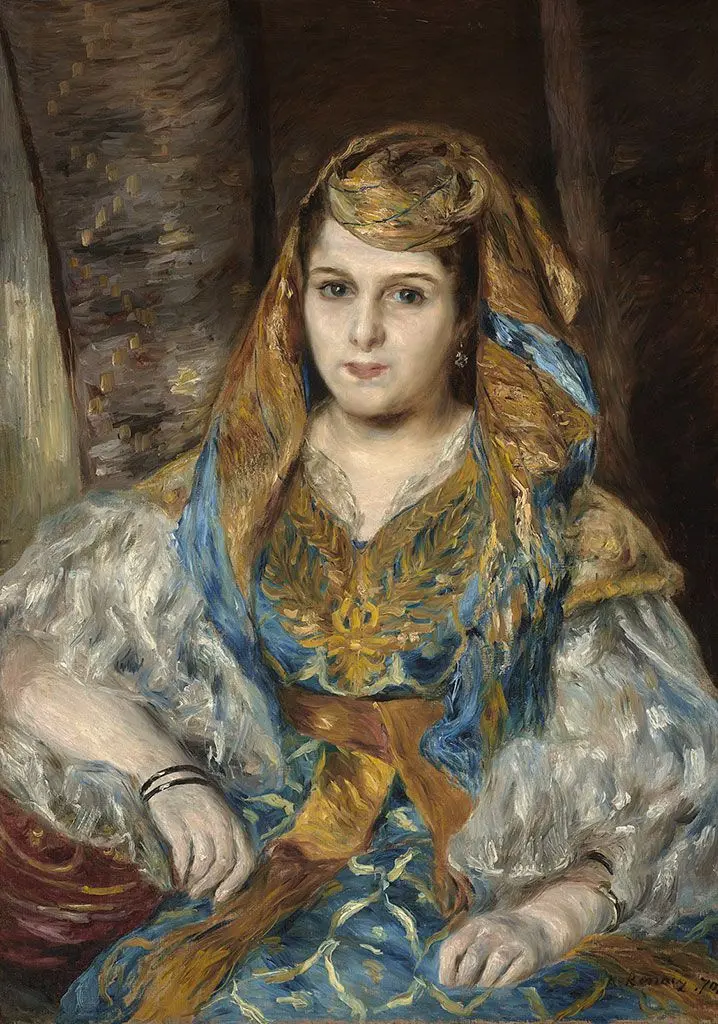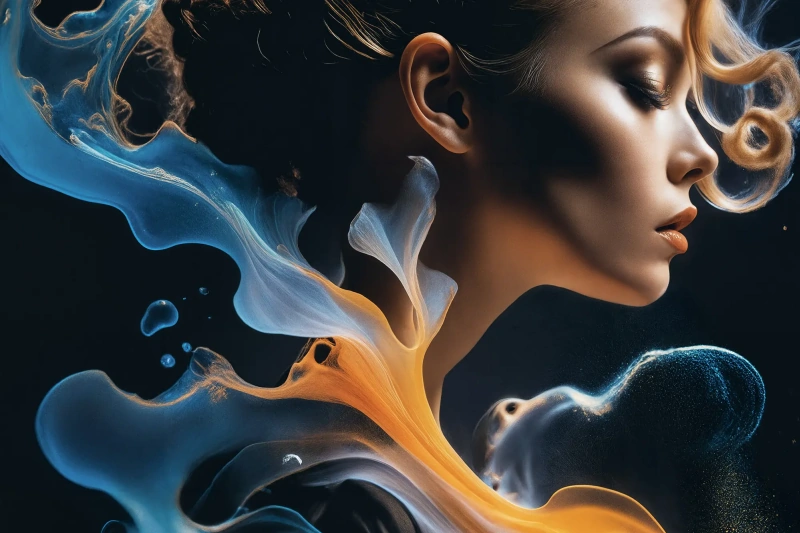Мarmottan Monet Museum in Paris unveils Monet’s private collection of art works for the first time ever. It was hidden from all eyes except for his relatives and close friends when he was alive and then was partially dispersed among different museums after his death. They are on display now in an exhibition titled "Monet Collectionneur" ("Monet the Collector," ending January 14, 2018).

Did you know that Claude Monet, the grand master of Impressionism , was also an ardent collector?
This is what Мarmottan Monet Museum experts discovered four year ago and since then have been hunting down for more than 120 works both by Monet’s precursors and his contemporaries — from Delacroix and Corot, to Renoir and Cézanne.This fall they finally mounted the first exhibition of Monet`s 'secret' collection titled "Monet the Collector." Many exhibits came from the museum itself — none in the world has as many Monets as this institution does — and there are many other artworks once owned by the artist and later donated by his second son, Michel, to the museum as well. Other lenders include New York’s MoMA and Metropolitan Museum of Art, the National Gallery of Art in Washington, the museums of Houston, San Francisco, St. Louis, São Paulo, the museums in Brazil, Japan and Germany, the Musée d’Orsay and the Musée Rodin in Paris as well as several private collections.
Now The Musée Marmottan Monet in Paris is showing to the wide audience 77 paintings, dozens of watercolors, and several sculptures owned by Claude Monet.

Claude Monet in his studio in Giverny, Normandy, France, about 1910−1926.
Why did it take so long to gather Monet precious collection, given the immense interest to his figure?
Just because at the death of the painter, his son Michel, rather than to display his father’s collection, kept the paintings under beds or piled them high gathering dust. It lasted that way till the moment he realized he needed money for his African safaris, which were his main interest in life. So, he dispersed a part of the collection to finance his hobby. To make the story even more complicated, the notarized collection inventory taken at the time of the artist’s death was destroyed during of the World War II.The museum’s director Patrick de Carolis wrote that Marianne Mathieu, one of the curators of the exhibition, and art historian Dominique Lobstein searched for the artist’s collection "almost as if conducting a complex police investigation."
"We knew really very little about the collection," said Marianne Mathieu, who actually brought together the large part of the collection. "Monet didn’t speak about his private life and kept his art collection just as private," she added.

Marianne Mathieu, Assistant Director Musée Marmottan Monet and Curator of the Exhibition. Photo: Radio-Canada / Geneviève Milord
So, the experts put considerable effort to track down the slightest traces of each masterpiece of the Monet collection, which the painter was very careful to keep secretly for him. He considered the collection a part of his private life and unfortunately for us no records were left of what he had purchased.
"I am selfish. My collection is for myself alone… and for a handful of friends," the master once told Marc Elder, the author of the 1924 biography "À Giverny, chez Claude Monet". "I keep it in my bedroom around my bed…"

Claude Monet’s bedroom in his house at Giverny, Normandy, France. Photograph: beautyshared.org.
Remarkable gardens around his house at Giverny in Normandy, where the artist lived for forty-three years, from 1883 to 1926, have always drawn plenty of visitors. While the artist was painting his signature water lilies in open air, the guests did not miss a chance to peek their noses inside his house. However, Monet kept the collected paintings upstairs in his private apartments far from prying eyes, and only a privileged few were allowed to have a glance at the canvases he kept for himself.
They had, however, an easy access to the Japanese woodblock prints framed and arranged in the rooms on the ground floor, staircase, and bathroom. This collection is probably the most famous parcel of the artworks that belonged to Claude Monet, of which 247 sheets are still at Giverny, including the significant holdings by Katsushika Hokusai, Utagawa Hiroshige, and Kitagawa Utamaro.
Claude Monet admired the sensitive Japanese landscape art that influenced his choice of the subject matter and palette.
They had, however, an easy access to the Japanese woodblock prints framed and arranged in the rooms on the ground floor, staircase, and bathroom. This collection is probably the most famous parcel of the artworks that belonged to Claude Monet, of which 247 sheets are still at Giverny, including the significant holdings by Katsushika Hokusai, Utagawa Hiroshige, and Kitagawa Utamaro.
Claude Monet admired the sensitive Japanese landscape art that influenced his choice of the subject matter and palette.

Monet’s dining room in his house at Giverny, Normandy, France. Photograph: homesthatfit.com.
The beginning of the collection dates back to 1859, when Claude Monet left Le Havre for Paris to complete his training as a painter.
He led a bohemian life and soon shared it with a model Camille Doncieux. In a while, she would become his wife and give birth to two sons: Jean in 1867, and Michel in 1878. During these early years, Monet and his family regularly sit for their friends artists. It was a mutually beneficial sitting, for they would pose for one another and give each other the resulting portraits.Charles Lhuillier, Gilbert de Séverac, Carolus Duran were the first to immortalize Monet and his family on canvas. Soon Édouard Manet and Pierre Auguste Renoir took over and represented Claude, Camille and little Jean in Argenteuil where they lived from 1871 to 1875. These paintings were presented to Monet as gifts. Testimonies of friendship and years of companionship, these "family portraits" make up the bulk of Claude Monet’s private collection and are the precious memories he would have never let go.
The exhibition is full of anecdotes about the art works such as the Portrait of the Artist Monet and his Wife Camille (left). A session seemed so endless to Monet that he could not sit till its end, and Édouard Manet was the only able to sketch Claude’s face, leaving the image in progress and painting unfinished.
Later, Monet was gifted more significant works, like an oil painting by Gustave Caillebotte The Piano Lesson (c. 1879) (left) and a sketch for his now-famous Paris Street. Rainy Day (1877) (right).
Peers of the artist and their family members would continue to present works to Monet as a gesture of gratitude or honor throughout his life. The artist has received three works by Berthe Morisot, including The Bath (1886) (left). He also acquired three works by Camille Pissarro, two etchings and a painting. The Peasant Women Planting Stakes (1891) (right) was a gift from the artist’s wife in return for Monet’s 15,000 francs that he lent Pissarro family to buy a house.
Bacchantes Embracing
1896
Claude Monet met Auguste Rodin around 1888. A famous gallery owner George Petit invited both well-known artists for an unusual display that combined Monet’s paintings and Rodin’s sculptures. They became colleagues and made a friendly swap: Monet gave one of his thirty-nine views of Belle-ÎÎle-en-Mer (1886) for Rodin’s bronze cast of Jeune mère à la grotto (Young Mother at the Cave) (1886).
Later, two more plasters by Rodin, The Jupiter Bull (modeled around 1883−1885) and Bacchantes Embracing (before 1887) entered the collection of Monet. Engraved with a dedication on the base: "To the great master C. Monet, his friend Rodin," it was miraculously found in some private collection during the preparation of the exhibition and presented for the first time to the public.
Later, two more plasters by Rodin, The Jupiter Bull (modeled around 1883−1885) and Bacchantes Embracing (before 1887) entered the collection of Monet. Engraved with a dedication on the base: "To the great master C. Monet, his friend Rodin," it was miraculously found in some private collection during the preparation of the exhibition and presented for the first time to the public.
From the 1890s onwards Claude Monet became rich and famous and could afford to buy any art work he liked.
As soon as Monet got spare cash, he began collecting works by his immediate forerunners: Delacroix, Boudin and Corot, although he did not acknowledge their influence on his work until late in his life. He bought their paintings at auctions or from art dealers, discreetly. Sometimes, he had a friend to buy on his behalf.
"It was a private passion," Marianne Mathieu continues. "There was nothing to do with the market, nothing to do with supporting friends, nothing to do with friendship. Monet wanted to collect pieces he considered major and all of them are linked to his main concern, Impressionist painting, but all of them are different from what he did."
After the masters of the immediate past, Claude Monet switched to his contemporaries concentrating his purchases mainly on two artists: Pierre Auguste Renoir and Paul Cézanne — because their art complemented his own, according to Ms. Mathieu.
For the privacy of own rooms at Giverny, he bought a series of nudes from Renoir, a subject he never dared to paint himself, and supplemented it by Cézanne's male "Bathers."
For the privacy of own rooms at Giverny, he bought a series of nudes from Renoir, a subject he never dared to paint himself, and supplemented it by Cézanne's male "Bathers."
Monet would go on to pay amounts that made fortune at the time. Admiring Renoir’s The Mosque (Arab Festival) (1881), he paid 10,000 francs. And when Cézanne's Melting Snow, Fontainebleau (1879−80) came up for auction, he paid 6,750 francs for it, a record for a Cézanne at the time.
Marianne Mathieu notes, "The collection resembles Monet himself: It’s the eye of Monet, it’s his selection."
Madame Clementine valensi Stora (Algerian woman)
1870, 83.8×58.4 cm
Even though there were talks that Claude Monet was hostile to Neo-Impressionism, he collected Paul Signac paintings of the early period as well as Georges Seurat, whom Monet had pointedly refused to exhibit alongside, according to Ms. Mathieu.
The artist also had a handful of paintings by a younger generations of artists, including Édouard Vuillard.
Monet collected works that were nothing like his own. The exhibition "Monet Collectionneur" reveals another reality: sometimes Monet’s public sayings about artists and art styles differed from his real feelings and fascinations. Claude Monet was a very private artist with a very open mind.
The artist also had a handful of paintings by a younger generations of artists, including Édouard Vuillard.
Monet collected works that were nothing like his own. The exhibition "Monet Collectionneur" reveals another reality: sometimes Monet’s public sayings about artists and art styles differed from his real feelings and fascinations. Claude Monet was a very private artist with a very open mind.
Venise
1908, 19.2×25 cm
"Monet Collectionneur" at the Marmottan Monet museum in Paris is on view from September 14, 2017 to January 14, 2018.
Written on the materials of artsy.net, francefineart.com, fabienribery.wordpress.com, thelocal.fr, The New York Times, giverny.org.













